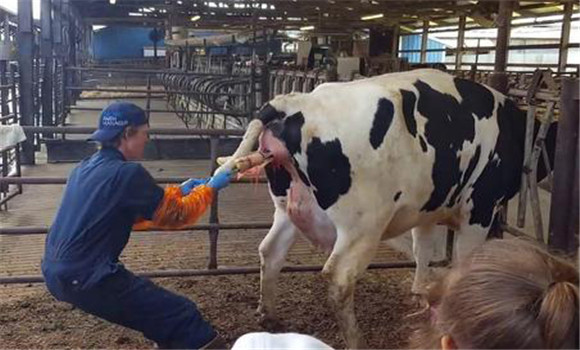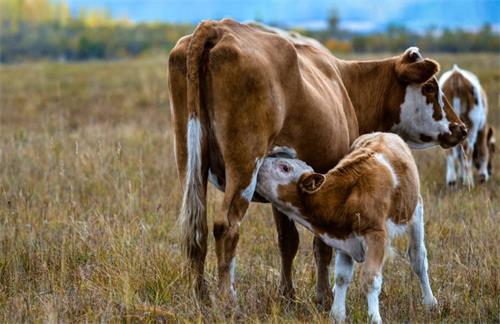The process and behavior of dairy cow delivery, opening period: also called the cervical opening period, refers to the period from the beginning of uterine contraction to the full opening of the cervix, which can be clearly seen in veterinary B-ultrasound. Contraction is a sign of the beginning of delivery. When the cow ends pregnancy, starts delivery, and begins contraction, it will show a decrease in appetite or no food, and mild restlessness. Compared with the expected date of delivery, we can determine that the dairy cow has begun to deliver at this time. In most cases, we will tie the cow's tail to the neck, clean and disinfect its hindquarters with disinfectant, and then transfer the cow to the delivery room or the playground of the delivery room to let it deliver naturally, and observe the delivery, or perform veterinary B-ultrasound examination.

Delivery period: also called the fetal delivery period, it is the period from the full opening of the cervix, the fetal sac and the anterior part of the fetus entering the vagina, to the fetus being discharged. This period is very obvious in veterinary B-ultrasound observation. The appearance of contraction is a landmark sign of the beginning of the delivery period, and it is also a sign that the fetal sac or fetus has entered the vagina. When the fetal sac and the anterior part of the fetus enter the vagina, the nerve receptors on the vaginal wall will promptly feed back this information to the central nervous system, so that the abdominal muscles and diaphragm begin to contract (pucker), and the contractions are strengthened to accelerate delivery. During this period, veterinary B-ultrasound can be used to check and then determine the delivery of the fetus.
Afterbirth discharge period: The period from the discharge of the fetus to the discharge of the afterbirth is the afterbirth discharge period. The process of afterbirth discharge should be observed regularly using veterinary B-ultrasound. After the fetus is discharged, the cow will calm down, the contractions will disappear, and the uterus will take a short rest for a few minutes. Then the uterus will begin to contract again (some birthing cows are accompanied by mild contractions during this period) so that the afterbirth can be discharged from the body within a certain period of time, and veterinary B-ultrasound should be used to observe whether the afterbirth is completely discharged. This process has no direct relationship with the content of dystocia inspection, so it will not be described here.








